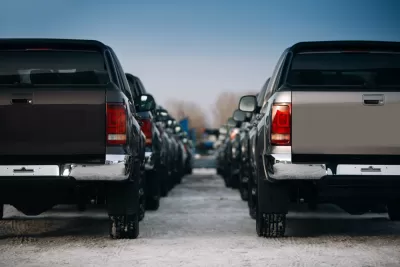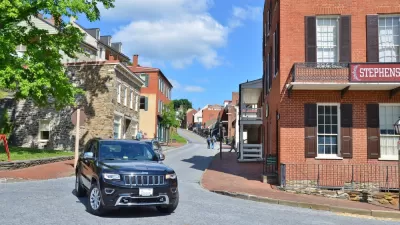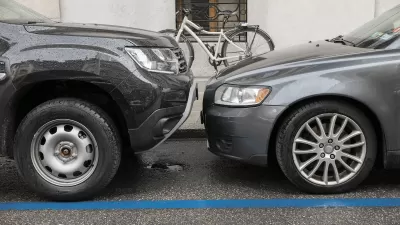The increase in miles driven by light trucks and other 'megacars' could have contributed to the rise in traffic deaths, despite an overall reduction in VMT.

"According to estimates from the Federal Highway Administration, vehicles classified as “light truck, long wheelbase” — a category which includes many of America’s most popular pick-up trucks, or any car with at least 121 inches between its axles — were driven about 1.5 billion miles more during the year that much of the country fell under quarantine orders than they were the year before, an increase of about one percent." Smaller cars, by contrast, traveled 16 percent fewer miles in 2020 than in 2019. The implications for public health are severe, writes Kea Wilson for Streetsblog.
The rising popularity of both SUVs and light trucks has long been recognized as a significant factor in the nation’s rising pedestrian death rate, which surged 21 percent between 2019 and 2020, the largest annual increase ever recorded by federal agencies; light trucks of all lengths are two to three times more likely to kill a walker in the event of a crash, because of their weight, height, and front-end design.
The article outlines a variety of possible reasons for the discrepancy, including the use of bigger vehicles by workers who can't telecommute and the correlation of large vehicles with right-leaning voters. But Wilson argues "Whatever the reason why so many megacar drivers took to the road in 2020, there’s no doubt that those motorists posed an outsized danger to vulnerable road users — and that something must be done about it."
FULL STORY: Feds: Megacar Owners Actually Drove More In 2020 Than 2019

Maui's Vacation Rental Debate Turns Ugly
Verbal attacks, misinformation campaigns and fistfights plague a high-stakes debate to convert thousands of vacation rentals into long-term housing.

Planetizen Federal Action Tracker
A weekly monitor of how Trump’s orders and actions are impacting planners and planning in America.

Chicago’s Ghost Rails
Just beneath the surface of the modern city lie the remnants of its expansive early 20th-century streetcar system.

Bend, Oregon Zoning Reforms Prioritize Small-Scale Housing
The city altered its zoning code to allow multi-family housing and eliminated parking mandates citywide.

Amtrak Cutting Jobs, Funding to High-Speed Rail
The agency plans to cut 10 percent of its workforce and has confirmed it will not fund new high-speed rail projects.

LA Denies Basic Services to Unhoused Residents
The city has repeatedly failed to respond to requests for trash pickup at encampment sites, and eliminated a program that provided mobile showers and toilets.
Urban Design for Planners 1: Software Tools
This six-course series explores essential urban design concepts using open source software and equips planners with the tools they need to participate fully in the urban design process.
Planning for Universal Design
Learn the tools for implementing Universal Design in planning regulations.
planning NEXT
Appalachian Highlands Housing Partners
Mpact (founded as Rail~Volution)
City of Camden Redevelopment Agency
City of Astoria
City of Portland
City of Laramie





























